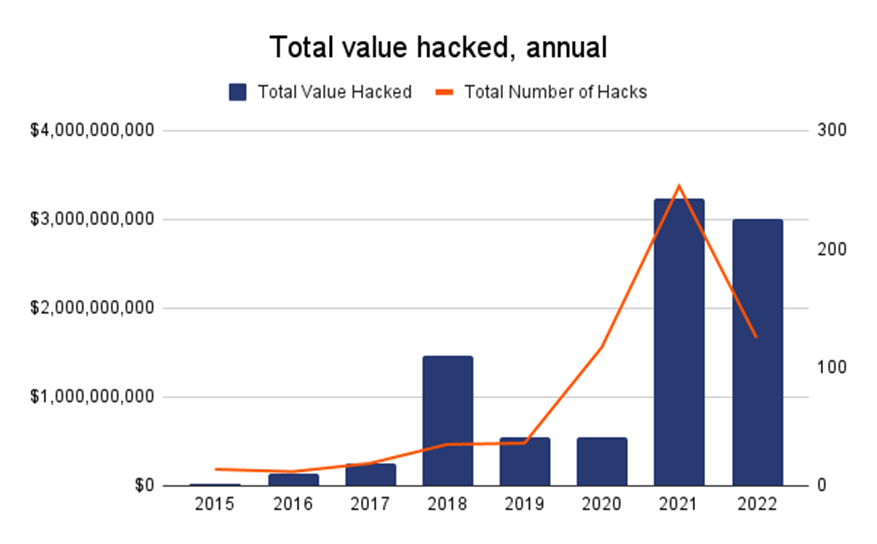SECTOR REPORT: Insurance Protocols

Blockchain-based insurance protocols have managed to become an independent sector, even though their fortunes follow the overall crypto market. Nevertheless, demand for insurance services aimed at crypto products is expected to increase over the long term.
Conventional insurance is a $4.5 trillion market, with projections suggesting it could reach $224.34 trillion by 2028. While the industry is dominated by big players like Allianz, Prudential, and Axa, blockchain uses a new approach to protect against a wide range of risks.
Specifically, decentralized insurance protocols enable users to cover against multiple types of risks using blockchain-based smart contracts, with the networks being governed by the communities.
In this article, we’ll discuss the most active decentralized insurance protocols, and explore the opportunities for long-term crypto investors.
Insurance Protocol Industry Overview
Insurance is one of the main use cases in decentralized finance (DeFi) – the blockchain trend that aims to put all financial services on community-driven decentralized infrastructures.
At this point, insurance protocols hardly compare with larger DeFi subsectors like lending and decentralized exchanges (DEXes) in terms of market cap and total value locked (TVL). Still, insurance projects offer some great benefits that could propel their growth in the years to come.
Thanks to blockchain’s unique features of decentralization, transparency, and lack of intermediaries, insurance protocols can address several key challenges of traditional insurance companies. For example, blockchain technology can be leveraged to reduce fraud, increase the speed of transactions, and improve risk management.
Judging by the performance of Nexus Mutual (NXM), Etherisk (DIP), and InsurAnce (INSUR), the native tokens of three popular decentralized insurance protocols, the sector has suffered throughout the crypto winter: DIP and INSUR have dropped by over 90%, while NXM has lost more than 85% in 2022.

DeFi insurance protocols can offer the same solutions as their traditional counterparts, such as auto insurance and health insurance. Decentralized insurance projects can also be used to protect against potential fund losses (due to hacks or bankruptcies) on both centralized and decentralized exchanges.
Top Blockchain Insurance Projects
| Project | Ticker | Market Cap | Total Value Locked (TVL) | Claims Paid |
| Nexus Mutual | NXM | $274,186,199 | $180M | $8.7M |
| InsurAce | INSUR | $3,130,541 | $11.35M | $11.6M |
| Etherisc | DIP | $2,752,797 | – | |
| EASE (formerly ARMOR) | EASE | – | $6.3M | |
| Bridge Mutual | BMI | $780,340 | $730K |
Investment Thesis
Today, most decentralized insurance protocols focus on insuring DeFi users by mitigating potential risks related to hacking attacks and other capital losses. This is a significant opportunity.
DeFi has experienced tremendous growth through 2022, attracting both retail and institutional investors. However, the rapid adoption of DeFi has also led to an increase in protocol vulnerabilities. Hackers deprived investors of over $3 billion in 2022, according to Chainalysis data from late October, which is close to the amount recorded in 2021.

This increasing demand for protection from DeFi hacks means insurance protocols are expected to become a priority in the coming years, thanks to an increase in demand for risk mitigation mechanisms.
Apart from the DeFi space, we also expect to see many insurance protocols focus on covering centralized exchanges like Binance and Coinbase, since these are essentially “blockchain banks” but without FDIC insurance.
Investors can get exposure to insurance protocols in different ways, such as buying the native token that fuels the ecosystem (like buying the stock), backing the team behind the protocol, or providing liquidity for insurance coverage.
Who’s Investing: Institutional Backing
There are a few major insurance protocols today, and most of them have secured capital from institutional investors or venture capital firms.
In the second half of 2021, Nexus Mutual raised almost $3 million from a pool of institutions that included Blockchain Capital, Collider Ventures, 1kx, Dialectic, 1Confirmation, Version One, and Delphi Digital. (Collider, 1kx, and Delphi are also invested in Ease, another DeFi insurance solution.)
Elsewhere, InsurAce secured funds from Singapore-based Signum Capital and Hong Kong-based IOSG Ventures and HashKey.
(The infamous Alameda Research was invested in all insurance protocols mentioned above, but it filed for bankruptcy due to the solvency crisis experienced by its sister crypto trading firm, FTX.)

Nexus Mutual (NXM)
Nexus Mutual is a DeFi insurance protocol that provides coverage for both DeFi and centralized platforms. Nexus’s flagship product is the Smart Contract Cover, which offers coverage for smart contract-related bugs and hacks.
Its newer products also help clients to protect against hacks and halted withdrawals on centralized exchanges or custodial wallets, as well as against failures in interest-bearing token depeg events.
For example, in August 2022, crypto lending platform Hodlnaut announced that they were halting withdrawals, token swaps, and deposits. Nexus members who had purchased Hodlnaut Custody Cover were protected against withdrawals being halted for over three months. Thus, in November, Hodlnaut Custody Cover holders started to file claims, and Nexus paid over $1 million to affected members.
The Nexus ecosystem is fueled by its native token, NXM, which also acts as a governance token that gives holders voting rights in the Nexus Mutual DAO (like shareholder votes).
Nexus is currently the most sought-after DeFi insurance protocol, which makes it one of the best investment opportunities for those looking to get exposure to the DeFi insurance market.
While NXM is available on the native platform only, the Wrapped NXM version (WNXM) is available on centralized and decentralized exchanges. Only NXM members can wrap and unwrap the token on Ethereum. The price and performance of the two differ, but show a high correlation.
Social Proof:
- Twitter followers: 41,100
- Discord members: 9,100
- Telegram: 2,400
InsurAce (INSUR)
InsurAce was launched in early 2021 and has quickly become the second-largest DeFi insurance protocol after Nexus. It is integrated with Ethereum, Polygon, Binance Smart Chain, Solana, and NEAR.
It protects users from common DeFi risks, including hacks and smart contract bugs that may lead to a loss of tokens. On top of that, it offers protection against losses of assets held on centralized exchanges, wallets, as well as stablecoin depeg and IDO events.
Click to watch the incredibly amateurish InsurAce explainer video
The InsurAce ecosystem is fueled by the native token with the ticker INSUR, which acts as the governance token. The token is also used to reward members that provide capital to underwrite risks in the underwriting pool with $INSUR tokens. Despite the bearish pressure, INSUR appears to be here to stay as the DeFi and crypto market participants will continue to seek efficient solutions to minimize risks.
Social Proof:
- Twitter followers: 42,600
- Discord members: 6,300
- Telegram: 8,700
Etherisc (DIP)
Etherisc was launched well before DeFi became a thing in 2020. The Ethereum-based decentralized insurance platform offers a wide range of insurance products, including Crop Insurance, Flight Delay Insurance, Hurricane Protection, Crypto Wallet Insurance, and Social Insurance, among others.
Click to watch the Etherisc explainer video
The Etherisc ecosystem is backed by the DIP token, which is used for all transactions on the platform. To ensure a high standard of insurance services, service providers are required to stake DIP tokens, which can be forfeited in the case of non-performance.
DIP is trading near record lows at the time of this writing, but the token has the potential to recover thanks to Etherisc’s wide range of insurance products, including those that mimic traditional coverage.
Social Proof:
- Twitter followers: 11,200
- Discord members: 516
- Telegram: 3,333
Investor Takeaway
Decentralized insurance protocols offer a new approach to protect against a wide range of risks, especially those related to crypto transactions, crypto custody, smart contracts, and yield farming operations, among others.
Since the sector is relatively new, the native tokens of insurance protocols can be more volatile and responsive to the general mood in the crypto space. Nevertheless, insurance will continue to be necessary both in DeFi and centralized finance (CeFi).
It may be too early to make large investments in this space, but it’s worth keeping an eye on the leaders above, particularly Nexus Mutual. (Other notable mentions include Solace and Unslashed.)
Warren Buffett famously made much of his fortune in insurance. Watch this space closely: the same opportunities are coming to crypto.
Subscribe to Bitcoin Market Journal to discover more blockchain investment opportunities!






 Bitcoin
Bitcoin  Ethereum
Ethereum  Tether
Tether  USDC
USDC  TRON
TRON  Dogecoin
Dogecoin  Cardano
Cardano  Bitcoin Cash
Bitcoin Cash  Chainlink
Chainlink  LEO Token
LEO Token  Stellar
Stellar  Monero
Monero  Zcash
Zcash  Litecoin
Litecoin  Hedera
Hedera  Dai
Dai  Cronos
Cronos  OKB
OKB  Tether Gold
Tether Gold  Ethereum Classic
Ethereum Classic  KuCoin
KuCoin  Gate
Gate  Algorand
Algorand  Cosmos Hub
Cosmos Hub  VeChain
VeChain  Dash
Dash  Stacks
Stacks  Tezos
Tezos  TrueUSD
TrueUSD  IOTA
IOTA  Basic Attention
Basic Attention  Decred
Decred  Theta Network
Theta Network  NEO
NEO  Synthetix
Synthetix  Qtum
Qtum  Ravencoin
Ravencoin  0x Protocol
0x Protocol  DigiByte
DigiByte  Zilliqa
Zilliqa  Nano
Nano  Holo
Holo  Siacoin
Siacoin  Numeraire
Numeraire  Waves
Waves  Ontology
Ontology  Enjin Coin
Enjin Coin  Status
Status  BUSD
BUSD  Pax Dollar
Pax Dollar  Hive
Hive  Lisk
Lisk  Steem
Steem  Huobi
Huobi  NEM
NEM  OMG Network
OMG Network  Augur
Augur  Bitcoin Diamond
Bitcoin Diamond  Bitcoin Gold
Bitcoin Gold  Ren
Ren